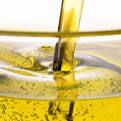











The Bioactivity of Essential Oils
When he took what had come to be his usual solitary evening stroll along the terrace or beside the lotus pool, he felt an extraordinary sense of mental and physical settlement;
James Hilton, Lost Horizion
In line with conventional medical research, the explanation of essential oil efficacy was focused for the longest time on the pharmacology of isolated chemical components. As out culture prizes medical and drug science almost above everything else, we began to overlook that essential oils are part and parcel of living nature.
Ignoring the biological nature of essential oils has inhibited aromatherapy. It led to the racit assumption that there is a similarity in the therapeutic use of essential; oils and conventional drugs. As a result, the language used for the prescription and application of essential oils generally resembles that of conventional medicines.
But equating essential oils with man-made drugs, simply because we can give chemical formulas for the constituents of both , leads to fundamentally incorrect conclusions. Man-made drugs are produced in factories, reflecting at best human ingenuity and at worst Enron-style exploitation. They often are a synthesis of our culture of war with the latest achievement of corporate science.
Reflecting our culture, they are intended to fight pathogens , disease, germs, cancer, infections, and, lately those aspects of our lifestyles that are somehow deemed undesirable.
To overcome those limitations, aromatherapy has to stop mimicking drug science and give renewed recognition to the fact that essential oils arise from nature. Their activity is shaped by the ambient ways of the plant world. Essential oils do not act as weapons but as agents of interaction. They are a key ingredient of life itself, strengthening its fabric and preconditions.
Scientific Context - Ernst Mayr
Ernst Mayr is professor emeritus of zoology at Harvard University. He ranks among the most eminent biologists of the twentieth century and has given evolutionary biology many important impulses.
He is author and editor of many books in his field. In 1997 he published This is Biology. an eloquent and immensely readable introduction to the character and development of biological thinking and the science of life itself.
Reference: The Healing Intelligence of Essential Oils: Kurt Schnaubelt, Ph.D.
Articles Latest
- Chamomile Roman - Chamaemelum nobile
- Chamomile Maroc - Ormenis multicaulis
- Chamomile German - Matricaria recutica
- From Biology To Aromatherapy
- Plant Messengers
- Celery Seed-Apium graveolens
- Cedarwood Virginian - Juniperus virginiana
- Cedarwood, Texas- Juniperus ashei - Essential oils
- Cedarwood Atlas- Cedrus atlantica - Essential Oils
- Cassie - Acacia Farnesiana - sweet acacia
- Cassia - Cinnamomum Cassia
- Cascarilla Bark - Croton eluteria
- Carrot Seed- Dacus Carota
- CARDAMON
- CARAWAY
- CANANGA
- CAMPHOR
- CALAMUS
- Calamintha-Calamintha officinalis
- CAJEPUT- Melaleuca cajeputi
- Plant Expression
Articles-Most Read
- Home
- Balsam Canadian - Abies balsamea
- Balsam Peru
- Copaiba Essential Oil
- North America: Tea Tree and Monarda-3
- Basil French - Ocimum basilicum
- Basil Exotic
- North America: Tea Tree and Monarda-2
- Exploring Transcultural Constants
- Thyme Essential Oil
- Balsam Tolu
- Palma Rosa
- Bay - West Indian - Pimenta racemosa
- The Bioactivity of Essential Oils
- Benzoin - Styrax benzoin
- Why Pharmacology Cannot Demonstrate Essential Oil Efficacy
- Exploring Essential Oil Activity The Conventional Way
- Complex information From Plants
- Aromatherapy: An Answer
- Contacts
